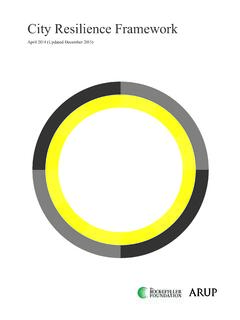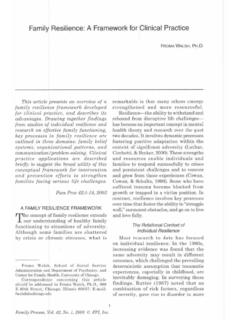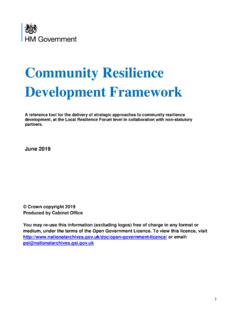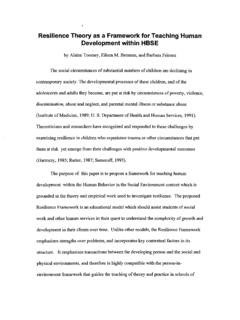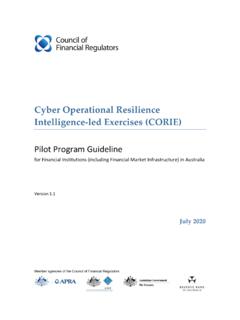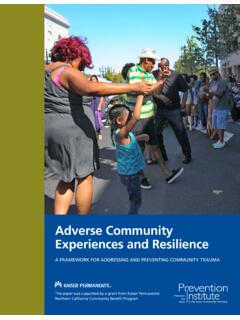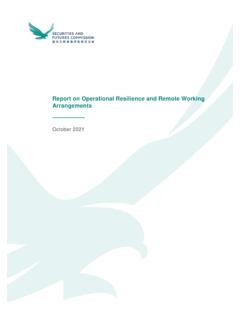Transcription of NHS England Emergency Preparedness, Resilience and ...
1 1 NHS England Emergency Preparedness, Resilience and Response framework OFFICIAL 2 OFFICIAL 3 NHS England Emergency Preparedness, Resilience and Response framework Version number: First published: 21 March 2013 Prepared by: NHS England National Emergency Preparedness, Resilience and Response Unit All material forming the guidance is web based and prepared to be used primarily in that format. The web-based versions of the Guidance including underpinning materials have links to complementary material from other organisations and to examples of the practice of and approach to Emergency preparedness, Resilience and response in the NHS in England .
2 The web version of the guidance is available at This document will be reviewed annually. The National Health Service Commissioning Board was established on 1 October 2012 as an executive non-departmental public body. Since 1 April 2013, the National Health Service Commissioning Board has used the name NHS England for operational purposes. OFFICIAL 4 Contents 1. Purpose of this document .. 6 2. Who is this document 6 3. Applicable legislation and guidance .. 6 4. Background .. 7 Aim .. 7 Objectives.
3 7 5. Transition and reconfiguration .. 7 6. Definitions .. 8 Emergency Preparedness .. 8 Resilience .. 8 Response .. 8 Emergency .. 8 Incident .. 8 Business Continuity Incident .. 8 Critical Incident .. 9 Major Incident .. 9 7. Incident levels .. 9 Types of incident .. 10 8 Statutory requirements & underpinning principles of EPRR .. 10 Statutory requirements under the CCA 2004 .. 10 Statutory requirements applicable within the NHS Act 2006 (as amended) . 11 Underpinning principles for NHS EPRR.
4 13 Planning structures .. 13 NHS England Core Standards for EPRR and NHS Standard Contract(s).. 15 Cooperation between local responders .. 15 Mutual aid .. 15 Information sharing .. 15 Legal framework , public inquiries, Coroners inquests and civil action .. 16 Logging and record keeping .. 16 9 Roles and responsibilities .. 16 Accountable Emergency Officers(AEOs) .. 17 Providers of NHS funded services .. 18 NHS ambulance services: Ambulance Tactical Advisor .. 18 Mental health and learning disability secure services.
5 18 CCGs .. 19 Local Health Resilience Partnerships (LHRPs) .. 19 NHS England .. 20 NHS England regions .. 20 NHS England national .. 21 The Department of Health (DH) .. 21 Public Health England (PHE) .. 22 PHE local (Public Health England centres and locally delivered PHE services) 22 PHE regional .. 22 PHE national .. 22 Department of Communities & Local Government .. 22 OFFICIAL 5 Cabinet Office and Cabinet Office briefing rooms .. 23 10. Cycle of preparedness .. 23 Risk management.
6 23 Planning .. 23 Training .. 24 Exercising .. 24 Communications exercise .. 24 Table top exercise .. 25 Live play exercise .. 25 Command post exercise .. 25 Lessons identified .. 25 11 Organisational Resilience .. 26 12 Incident response .. 26 Alerting mechanism to be used in the event of an incident .. 27 Standard alerting messages .. 27 METHANE .. 28 Critical Incident .. 29 Internal and external communications .. 29 Escalation and de-escalation .. 30 Staff welfare .. 30 On-call staff.
7 30 13 Concepts of command and control .. 31 Operational .. 31 Tactical .. 31 Strategic .. 32 14 NHS command and control .. 33 The NHS in England .. 33 NHS England 33 NHS England national .. 33 Incident coordination .. 33 Incident Coordination Centre .. 34 ICC functions .. 34 Decision making .. 34 Organisational ICC requirements .. 34 15 Recovery .. 35 Debriefing .. 35 16 Assurance .. 36 17 Freedom of Information .. 36 18 Equality and health inequalities analysis .. 36 19 Acronyms .. 37 Appendix One: Escalation and de-escalation.
8 38 OFFICIAL 6 1. Purpose of this document The purpose of this document is to provide the framework for all NHS funded organisations in England to help with meeting the requirements of the Civil Contingencies Act 2004 (CCA 2004), the NHS Act 2006 as amended by the Health and Social Care Act 2012 (NHS Act 2006 (as amended)) and the NHS Standard Contract. In essence, this document seeks to describe how the NHS in England will go about its duty to be properly prepared for dealing with emergencies. It supersedes the following documents: Previous versions of this document NHS England Command and Control framework for the NHS during significant incidents and emergencies NHS England The Role of Accountable Emergency Officers NHS England Model Job Description and Competencies for Emergency Preparedness Officers in NHS Provider Organisations 2.
9 Who is this document for This framework contains principles for effective Emergency preparedness, Resilience and response (EPRR). It is strategic national guidance for all NHS funded organisations in England including: a) NHS trusts and foundation trusts b) Primary and community care organisations c) Providers of NHS funded services The term provider of NHS funded services includes any independent or third sectors that are contracted for health service provision across the health economy, as defined in the NHS Act 2006 (as amended) and the NHS Standard Contract General Conditions d) Commissioning organisations including NHS England , clinical commissioning groups (CCGs) and organisations providing support to CCGs e)
10 NHS Property Services f) NHS Supply Chain g) NHS Blood and Transplant All Accountable Emergency Officers (AEOs) and EPRR practitioners must be familiar with the principles of EPRR and be competent and confident of their roles and responsibilities in planning for and responding to incidents and emergencies. 3. Applicable legislation and guidance This document should be read in the context of: a) The CCA 2004 and associated Cabinet Office Guidance b) The NHS Act 2006 (as amended) OFFICIAL 7 c) The NHS Constitution d) The requirements for EPRR as set out in the NHS Standard Contract(s) e) NHS England EPRR guidance and supporting materials including.










